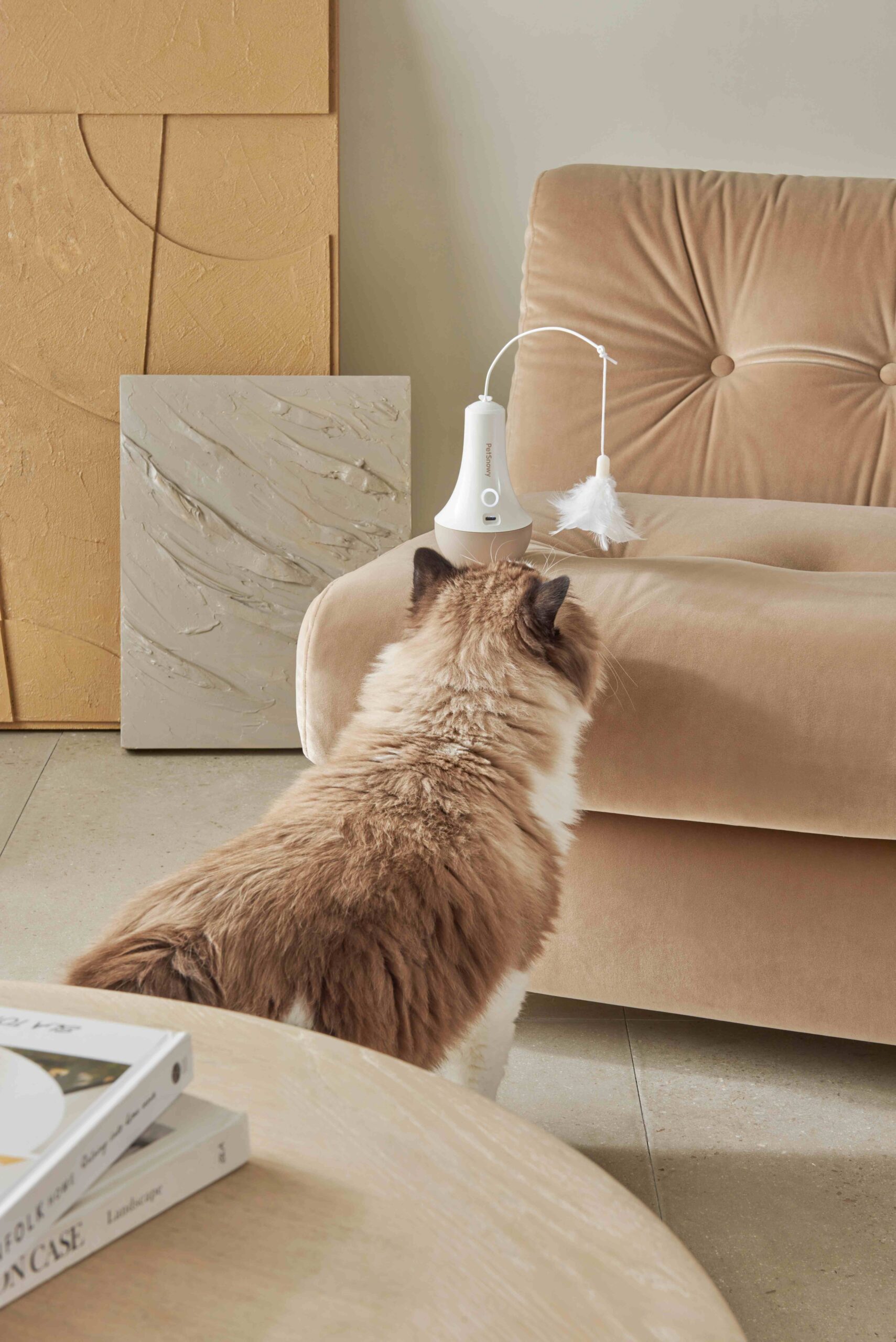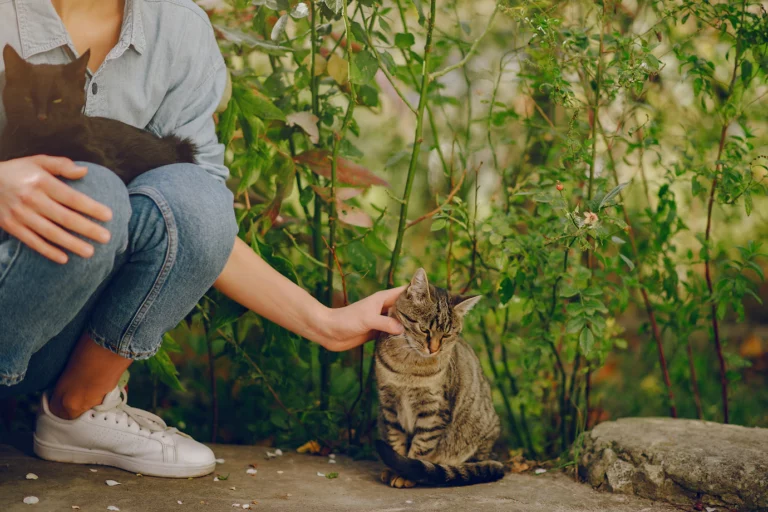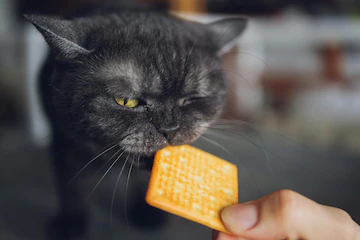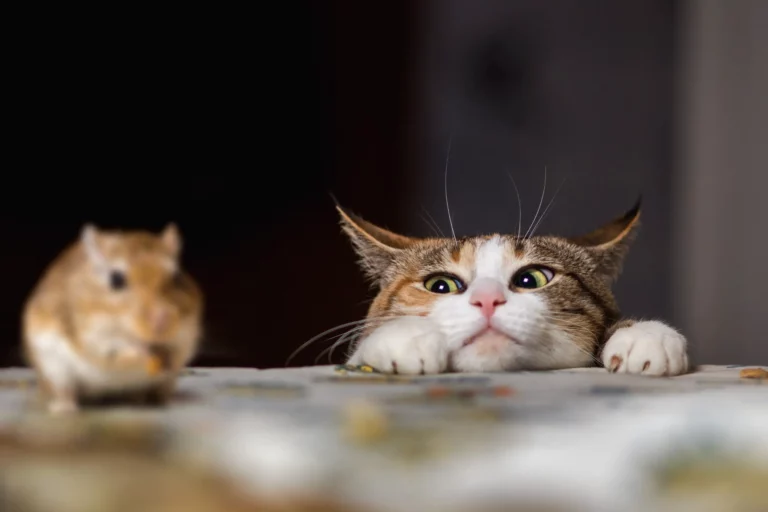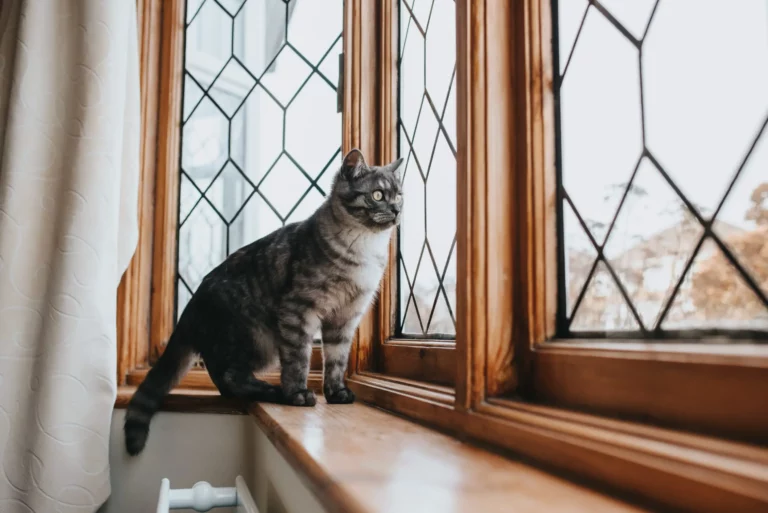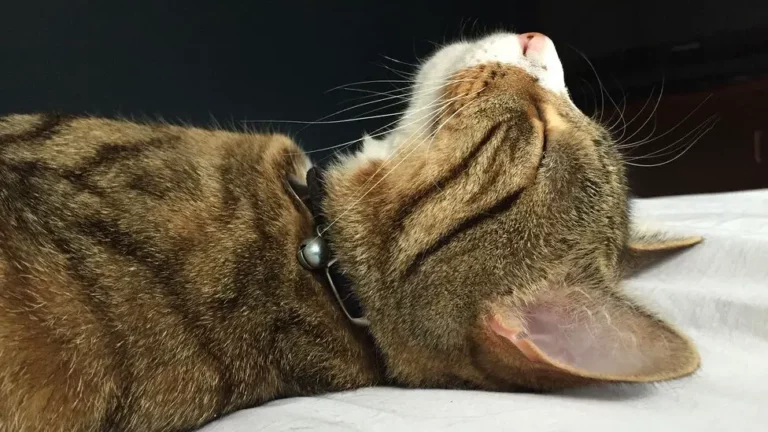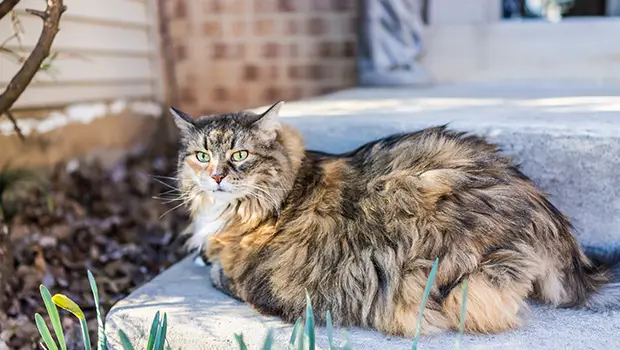Why Does My Cat Keep Bringing Me Her Kittens?
If you have noticed your cat bringing her kittens to you, you are likely wondering why this behavior is occurring. It’s important to understand why cats are doing this in order to better care for them. In this article, you will learn why cats often bring their kittens to their owners and how to best provide for your furry family.
With a little insight, you can form a bond with your cat and her kittens that is mutually beneficial.
Title
Mother cats often move their kittens as an instinctual behavior to protect them from perceived threats.
When a mother cat brings her kittens to her human owner, it’s usually a sign of trust. She views the owner as part of her family and believes her kittens will be safe with them.
The mother cat may also seek help from her owner if she’s feeling unwell or stressed.
If the mother cat feels the current environment is unsafe or unsuitable for her kittens, she may move them to a new location, often involving the owner.
It’s essential to provide a secure, quiet, and comfortable space for the mother cat and her kittens.
Human intervention should be minimal, especially during the early stages of the kittens’ life.
If the mother cat exhibits unusual behavior or seems excessively stressed, it’s recommended to consult a vet.
Normal Care a Mom Cat Gives to Her Kittens
| Stage | Description |
|---|---|
| Nursing | Kittens begin to nurse 1-2 hours after birth. The nursing/suckling relationship occurs over 3 stages. In the beginning, mom initiates each nursing episode, waking the kittens by licking them and then encircling them with her body. After a little while, the kittens learn to find the nipples on their own and initiate nursing. At this stage, the kittens also initiate some of the nursing episodes. The mother generally cooperates by lying down and taking up the nursing position. In the third stage, starting at about 5 weeks postpartum, the kittens initiate virtually all nursing. The mother becomes more of a supervisor, and the kittens are becoming more independent. |
| Feeding | Normally, the queen, or mother cat, will handle kitten weaning on her own. The kitten weaning process begins at about four weeks of age. The weaning process usually continues for about another month until the kittens are fully weaned between eight and 10 weeks of age. |
| Eliminating | The mother cat will stimulate the kittens to eliminate by licking their genital area. |
| Socialization | The mother cat will teach her kittens how to play, hunt, and interact with other cats. |
| Care | The mother cat will groom her kittens, keep them warm, and protect them from danger. |
See: Nursing Mothers and Their Kittens
Reasons Why Your Cat Brings You Her Kittens
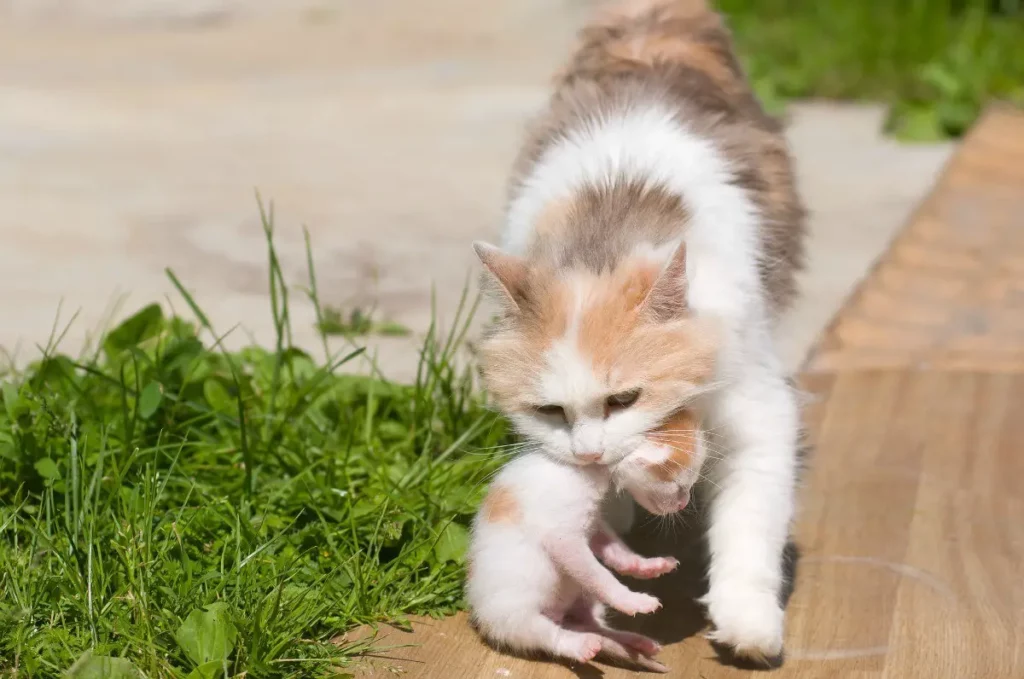
Your cat may be bringing her kittens to you as a sign of trust and affection. It is instinctive for cats to recognize you as a safe and reliable provider, so she may be entrusting you with her little ones.
You can foster a positive relationship and show your cat that she can trust you by observing her behavior and creating a safe environment for her and her kittens. Be sure to give your cat enough space and time to bond with her kittens and provide them with the necessary care they need.
A little playing together with the kittens can go a long way in making your cat feel safe and secure.
It is important to understand your cat’s needs and recognize that she is entrusting you with her beloved offspring. Show your cat that you are trustworthy, reliable, and willing to provide them with the necessary protection and care.
With a bit of understanding and patience, you can create an environment that your cat and her kittens feel safe and loved in.
1) Instinctive Behavior
Your cat’s instinctive behavior is to bring her kittens to you to ensure their safety and protection. As cats are very protective parents, your cat will likely bring the kittens to you because she trusts and believes that you will provide a safe environment for them.
She may also bring them to you to show off and let you know that these are her offspring. If you observe this behavior, it is best to try and understand what your cat is trying to communicate and create a safe environment for her and her kittens.
When your cat brings her kittens to you, try to give her affection, praise and acknowledgment. Let her know that you understand the importance of her role as a mom and are willing to provide a safe place for her and her kittens.
You can also offer treats or toys as a reward for her kindness. This will encourage her to bring her kittens back to you in the future and understand that you are a safe provider for them.
2) Need for Protection
Your cat bringing you her kittens is a natural, instinctive behavior to seek protection for her offspring. She knows you’ll keep her beloved babies safe, so she actively seeks you out when she sees them in danger.
You should be on the lookout for signs that she may be trying to alert you. If she’s meowing persistently or bringing them to you, then she’s trying to get your attention. To ensure your cat and her kittens are safe, make sure you create a secure, protective environment in your home. Give her access to a private, comfortable space to keep her kittens safe and away from potential predators.
3) Wanting You to Play With Them
If your cat keeps bringing you her kittens, it might be because she wants to share them with you and get some love and attention for them. Cats are incredibly social creatures and it’s quite possible that she wants you to show her kittens some affection.
Show her that you’re interested by petting them gently and talking to them in a soothing voice – your cat will be delighted! It’s also a great way to bond with your cat and her kitties.
When it comes to encouraging your cat’s behavior, take the time to get down on her level and play with the kittens. Taking a few minutes out of your day to give them a good, healthy cuddle will show them that they are safe and they will be more likely to come to you when they need a bit of comfort.
As their parent, it’s important to make sure they know that you care and that you’re there for them when they need it. Make sure you also give your cat plenty of attention, too!
No products found.
What are Feline Pheromones & How Do They Influence Cat Behavior?
Feline pheromones are chemical signals naturally produced by cats that play a crucial role in communication and behavior regulation. They are secreted from various glands located on a cat’s body, including those around the face, paws, and tail.
Cats use these pheromones to mark their territory, signal mating readiness, express comfort or stress, and facilitate social bonding. For instance, when a cat rubs its face against a person or an object, it’s depositing pheromones to mark its territory and convey a sense of familiarity and safety.
In the context of maternal behavior, mother cats produce specific pheromones that help kittens identify their mother and create a strong bond. These pheromones can also guide kittens towards their mother’s milk and provide a sense of security.
However, human intervention can disrupt these pheromone signals. For example, if humans frequently handle newborn kittens, the mother cat’s pheromones can be masked, potentially causing her to act protectively or anxiously.
Understanding the role of pheromones in cat behavior can help owners create a more comfortable environment for their pets, respect their natural behaviors, and better interpret their cats’ actions and needs.
The Role of Pheromones in a Mother Cat’s Interactions with her Kittens
Pheromones play a significant role in the interactions between a mother cat and her kittens. From the moment the kittens are born, the mother cat releases specific maternal pheromones that serve multiple purposes.
One of the primary roles of these pheromones is to create a bond between the mother and her kittens. Newborn kittens, with their limited sensory capabilities, rely heavily on these pheromones for recognizing their mother. This bonding process is crucial for the kittens’ survival and well-being.
These chemical signals also help guide the kittens towards their mother’s milk, critical for their growth and development in the early stages of life. The pheromones provide a comforting and familiar scent that signals safety and security to the kittens.
In addition to bonding and guidance, maternal pheromones also act as a protective mechanism. If a mother cat senses danger or perceives her kittens are at risk, she may relocate them to a safer spot. Her pheromones help the kittens adjust to the new environment and reassure them of their mother’s presence.
Human Handling of Kittens: Disrupting Pheromones and Influencing Maternal Behavior
Human intervention, particularly during the early stages of a kitten’s life, can disrupt the delicate balance of feline pheromones and potentially influence the mother cat’s behavior.
Newborn kittens are enveloped in their mother’s scent, which is largely composed of her unique pheromones. This scent serves as a recognition marker, helping the mother cat identify her offspring. When humans handle the kittens, they introduce new scents, which can mask these pheromones.
If the mother cat struggles to recognize her kittens due to the masking of her pheromones, she may become anxious or stressed. In some cases, this could lead to protective or aggressive behavior towards humans. There have been instances where mother cats have moved their kittens to a new location following human handling, likely as a protective measure in response to the perceived ‘scent invasion’.
Furthermore, frequent human handling can also disrupt the pheromone-guided bonding process between the mother cat and her kittens, potentially impacting the kittens’ sense of security and the mother’s caregiving behavior.
Thus, it’s recommended to minimize handling of newborn kittens, allowing the natural pheromone communication between the mother cat and her kittens to occur undisturbed.
Tips for Cat Owners: Respecting Pheromones in Newborn Kitten Interaction
Understanding and respecting the role of pheromones can significantly enhance your interaction with newborn kittens and their mother. Here are some practical tips to keep in mind:
- Minimize Handling: It’s best to limit handling of newborn kittens, especially in their first few days. This allows the mother cat to bond with her kittens without any scent disruptions.
- Observe from a Distance: Watch the kittens from a distance to avoid disturbing the scent environment. This also gives the mother cat a sense of security, knowing that her kittens are safe.
- Clean Hands: If you need to handle the kittens, for instance, to check their health or clean the nesting area, ensure your hands are clean and free from strong scents. This reduces the risk of masking the mother cat’s pheromones.
- Provide a Safe Space: Give the mother cat and her kittens a quiet, secure space where they won’t be disturbed. This helps the mother cat feel safe and reduces the need for her to move the kittens.
- Consult a Vet: If you notice any signs of stress or unusual behavior in the mother cat, consult a vet. They can provide further guidance on how to accommodate the mother cat’s needs while ensuring the kittens’ well-being.
What to Expect
When your cat brings you her kittens, you can expect her to be trying to protect them and keep them safe. She may be looking to you as an authoritative figure and provider to care for them. You may also receive some playful advances from your cat as she tries to encourage you to spend time with her and her kittens.
It’s important to understand your cat’s needs and keep an eye on her behavior. Make sure the environment she is bringing her kittens into is a safe and comfortable one.
Provide your cat with plenty of food, water, and a warm, clean place to rest. Having her kittens close to her can also help her feel secure and less anxious.
Understanding Your Cat’s Needs
To understand your cat’s needs, observe her behavior and create a safe environment. Your cat may become protective and territorial when she brings her kittens to you. She is likely trying to demonstrate her trust and affection for you by entrusting her babies in your care.
To ensure she remains calm and secure, avoid sudden movements and keep your voice low, gentle and reassuring.
When she brings her kittens over, keep your hands and any other pets away from them and avoid interruption. Your cat’s instinctive behavior should be respected and your positive reinforcement will help her out.
You can show your cat appreciation by providing her with food, petting her, playing with her, and talking to her in a gentle, affectionate manner. She will appreciate your attention and will be more likely to understand that her kittens are safe with you.
Creating a safe and comfortable environment for your cat to relax and socialize with her kittens is essential for their healthy development.
Observing Her Behavior
If you want to understand your cat’s needs, the best way to do so is by observing her behavior. Pay attention to any changes in her behavior and the environment she’s in. Does she seem agitated or anxious?
Does she move around more than usual? Is there anything in her surroundings that could be causing her distress?
These are all signs that something may be wrong. It is also important to ensure that your cat feels safe and secure in her environment.
If you notice any changes in her behavior, consider making some changes in her environment such as providing more hiding spots or providing a softer bed. Make sure your cat has plenty of toys, water, and food available. By understanding your cat’s needs and providing her with the right environment, you can help her feel safe and secure.
Creating a Safe Environment
Creating a safe environment for your cat and her kittens is an important part of being a responsible pet parent. To make sure they feel comfortable, make sure their space has plenty of hiding spots, a comfortable bed to sleep in, and toys they can explore and play with. You’ll want to ensure the temperature is regulated and the area is free from drafts and extreme temperatures.
Providing your cats with a variety of vertical spaces, like shelves and cat trees, will also help them feel safe, as cats are naturally climbers. Try to establish a routine for your cats.
Having a consistent schedule for feeding, playing, and cuddles can help your cats feel secure and relaxed. You may also want to provide separate bowls for food and water, as well as separate litter boxes for each cat.
If you have other pets, allow for some time for the cats to adjust to them and get used to their presence in the home. With a little patience and understanding, you can create a safe space for your cats and their kittens.
Final Thoughts
A mother cat bringing her kittens to her human owner is a manifestation of her trust and sometimes a call for help. It’s essential for owners to understand and respect this instinctual behavior, providing a safe and quiet space for the feline family.
Remember, minimizing human intervention, especially during the kittens’ early stages of life, can foster a healthy environment for both the mother cat and her kittens. Always be observant of any signs of stress or unusual behavior in your pet and don’t hesitate to consult a vet when needed.
This understanding will ensure a stronger bond with your pet and a healthy upbringing for the kittens.

